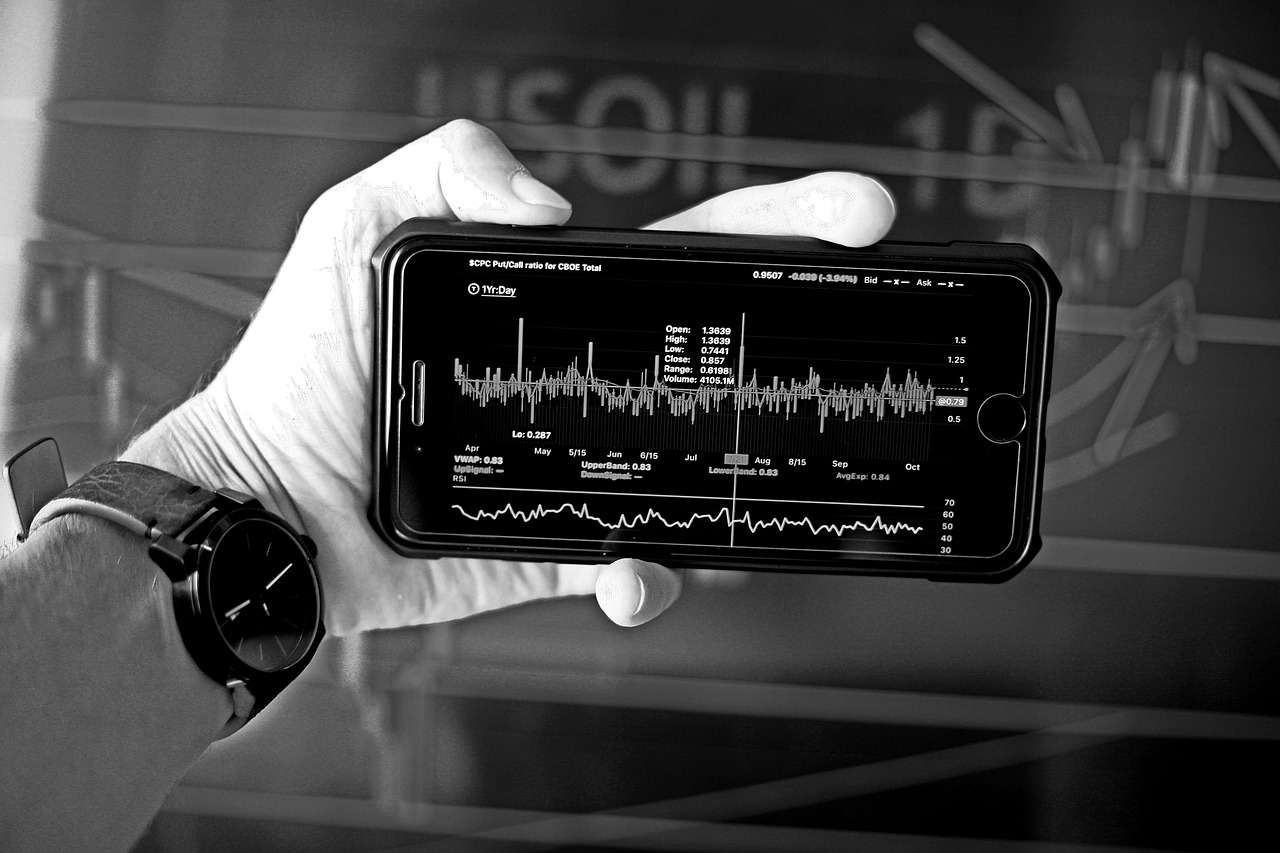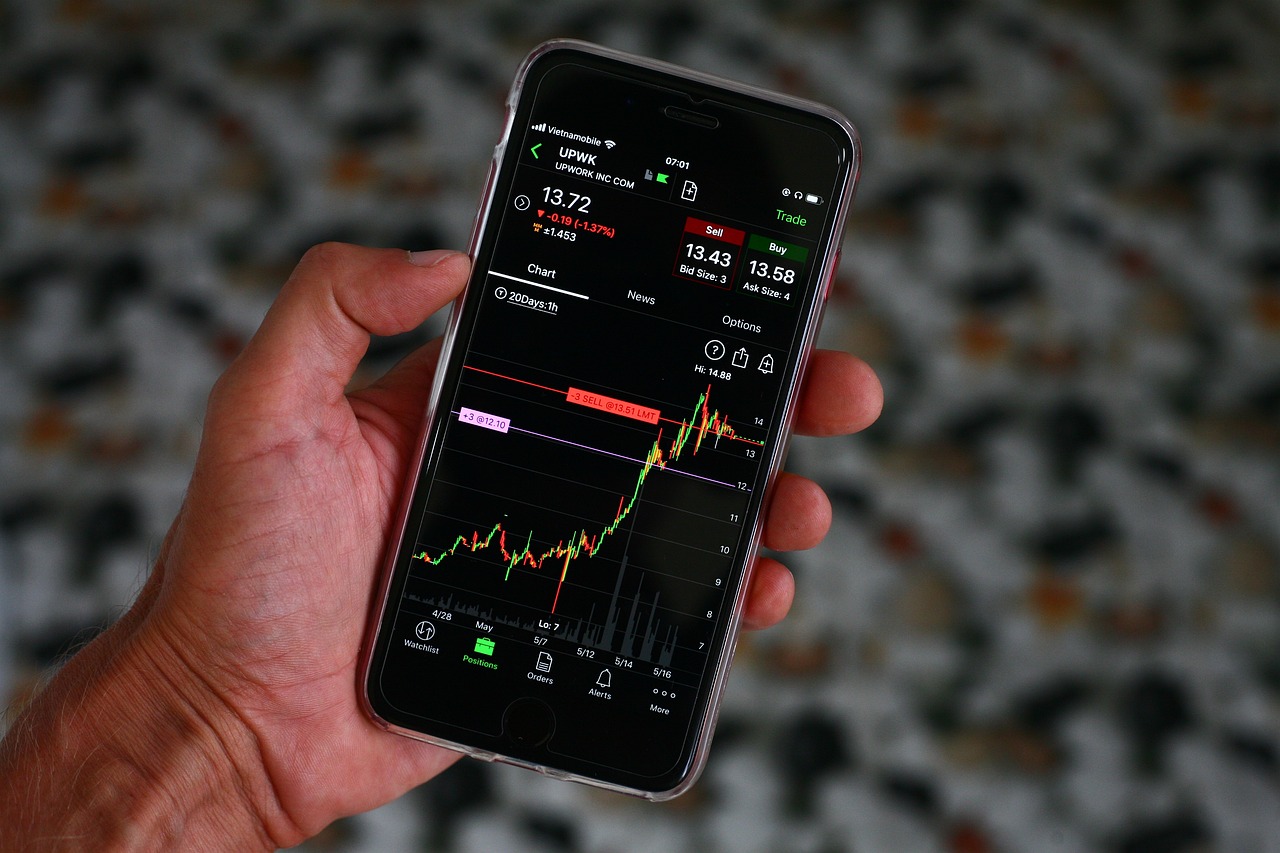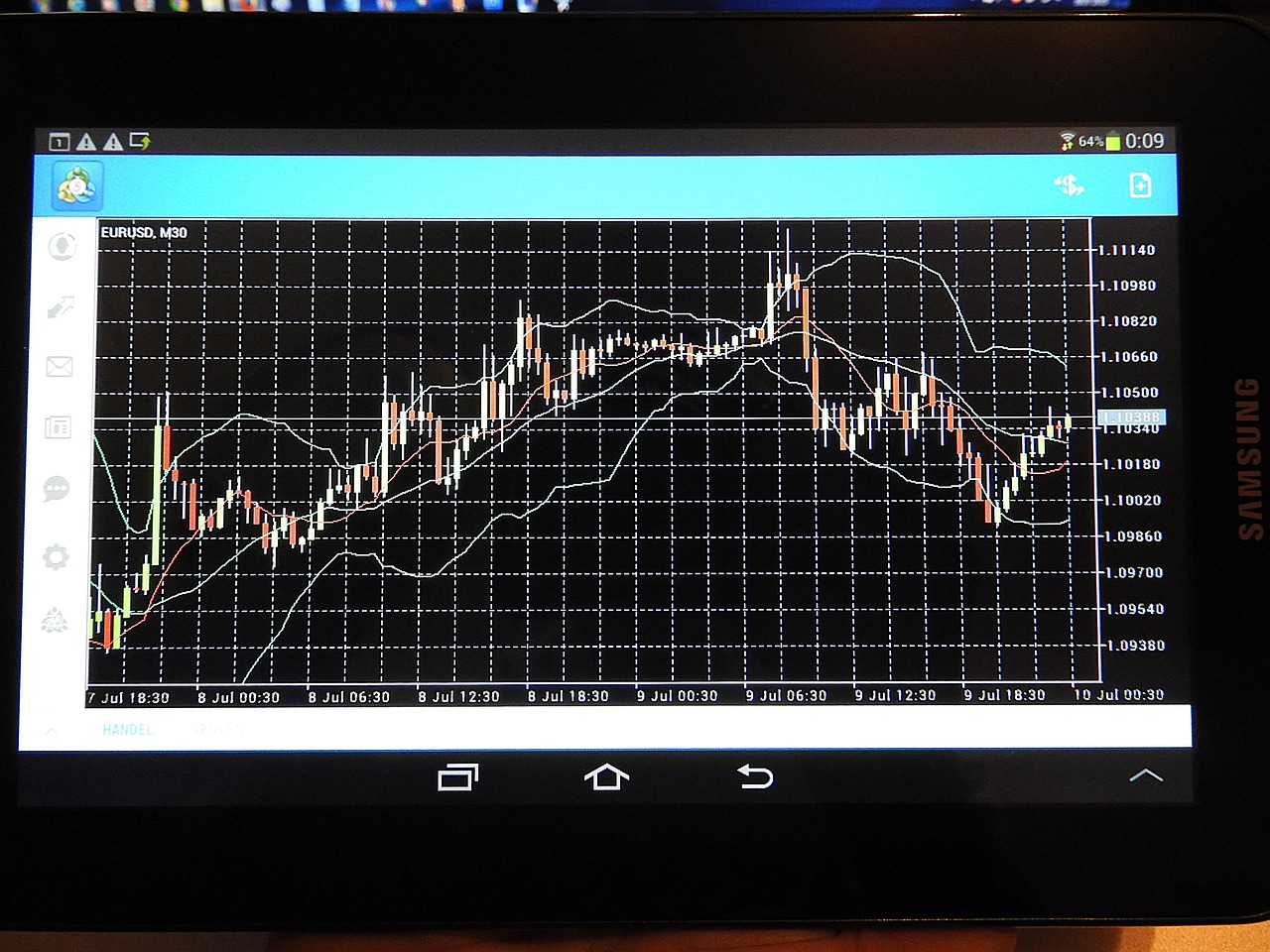Using Psychological Levels in Trading
Trading is often likened to a chess game, where every move counts and understanding your opponent's psychology can turn the tide in your favor. In this intricate dance of buying and selling, psychological levels emerge as pivotal markers that can guide traders through the tumultuous waters of the financial markets. These levels are not merely numbers on a chart; they represent the collective mindset of market participants, influencing their decisions and actions. By grasping the significance of these psychological levels, traders can enhance their strategies and make more informed decisions, ultimately leading to greater success.
So, what exactly are these psychological levels? They are price points that hold considerable meaning for traders, often acting as self-fulfilling prophecies. When a significant number of traders believe that a certain price level is important, they tend to act accordingly, which can cause the market to react in predictable ways. Imagine standing at the edge of a cliff; the point where you choose to step back or leap can be seen as a psychological level. In trading, these levels can dictate whether prices will rise or fall, making them crucial for anyone looking to navigate the market effectively.
Moreover, understanding these levels can help traders anticipate market movements. For instance, if a stock has consistently bounced off a particular price point, traders may view this as a support level, indicating a potential buying opportunity. Conversely, if a stock repeatedly fails to break through a certain price, that level may be seen as resistance, signaling a potential selling point. By recognizing these patterns, traders can position themselves advantageously, increasing their chances of making profitable trades.
In this article, we will delve deeper into the nuances of psychological levels in trading, exploring how support and resistance play critical roles in shaping market behavior. We'll also uncover the impact of round numbers and market sentiment on trader psychology, allowing you to harness these insights to refine your trading strategies. So, buckle up as we embark on this journey to unlock the secrets of psychological levels in trading!
Psychological levels are essentially price points that hold significant meaning for traders. Recognizing these levels can help traders anticipate market movements and make more informed trading decisions. They are not just arbitrary numbers; they are deeply rooted in the collective psychology of market participants. When traders see a price level that has previously acted as a support or resistance, it can evoke a sense of caution or eagerness, influencing their trading behavior.
Support and resistance levels are key psychological barriers in trading. Understanding these concepts can help traders identify potential entry and exit points for their trades. Support levels are where buying pressure may overcome selling pressure, while resistance levels signal where selling pressure may exceed buying pressure. The interplay between these two forces creates a dynamic environment that traders must navigate with precision.
Identifying support levels is crucial for traders. These levels indicate where buying pressure may overcome selling pressure, allowing traders to make strategic decisions. For instance, if a stock price drops to a support level and then rebounds, this can signal a buying opportunity. Traders often look for historical price action to identify these levels, analyzing past behavior to predict future movements.
Analyzing historical price action can reveal important support levels. Traders often look for past price behavior to predict future movements. For example, if a stock has repeatedly bounced off a specific price point in the past, it may be a strong indicator that the same level will act as support in the future.
Volume analysis can provide insights into the strength of support levels. Higher trading volumes at certain price points often indicate stronger support. When many traders are buying at a particular level, it creates a robust foundation that is less likely to break under selling pressure. This is why volume is often considered a critical component of technical analysis.
Resistance levels signal where selling pressure may exceed buying pressure. Recognizing these levels can help traders avoid potential losses. If a stock price approaches a resistance level and begins to falter, it may be wise for traders to consider selling or tightening their stop-loss orders.
Psychological barriers, such as round numbers, often influence trader behavior. Understanding these barriers can enhance trading strategies and improve decision-making. For instance, traders often place buy or sell orders at round numbers, which can create significant price barriers.
Round numbers often act as psychological barriers. Traders frequently place buy or sell orders at these levels, affecting market dynamics. For example, if a stock is trading at $50, many traders may place sell orders at this price, thinking it is a significant level. This can create a temporary ceiling on the stock's price until enough buying pressure can overcome it.
Market sentiment can significantly influence trading decisions. Understanding the psychological factors driving market sentiment can help traders better navigate the trading landscape. Whether it's fear, greed, or excitement, these emotions can drive market movements in unpredictable ways.
- What are psychological levels in trading? Psychological levels are price points that traders perceive as significant, influencing their trading decisions.
- How do support and resistance levels work? Support levels indicate where buying pressure may overcome selling pressure, while resistance levels signal where selling pressure may exceed buying pressure.
- Why are round numbers important in trading? Round numbers often act as psychological barriers, where traders place buy or sell orders, affecting market dynamics.
- How can I identify key support and resistance levels? Traders can identify these levels by analyzing historical price action and volume data.

Understanding Psychological Levels
This article explores the significance of psychological levels in trading, their impact on market behavior, and how traders can leverage these concepts to enhance their strategies and decision-making processes.
Psychological levels are not just random numbers on a chart; they represent significant price points that traders collectively recognize. These levels often serve as mental markers that influence trading behavior. For instance, when a stock approaches a psychological level, traders may react in predictable ways, either buying or selling based on their expectations of market movements. This collective behavior creates a self-fulfilling prophecy, where the anticipation of action at these levels can lead to actual market movements.
Understanding these levels is crucial for any trader looking to enhance their trading strategy. Think of psychological levels as the traffic lights of the trading world. Just as green means go and red means stop, psychological levels indicate where traders might feel compelled to act. Recognizing these signals can help traders anticipate potential price changes and make more informed decisions.
Moreover, psychological levels can often be identified through a combination of historical price action and market sentiment. Traders frequently look back at past price movements to identify where significant buying or selling has occurred. These historical points can indicate where traders may return to the market, creating a pattern that can be advantageous for those who know how to read it.
For example, consider the following table that illustrates how psychological levels can be identified:
| Psychological Level | Historical Price Action | Market Reaction |
|---|---|---|
| 100 | Price bounced back multiple times at this level | Strong buying pressure observed |
| 200 | Price struggled to break above this point | Increased selling pressure noted |
| 300 | Price surged through this level after initial hesitation | Significant buying momentum generated |
In addition to historical price action, volume analysis plays a pivotal role in confirming these psychological levels. A high trading volume at a particular price point often signifies that many traders are paying attention to that level. This can indicate stronger support or resistance, depending on whether the price is rising or falling. So, when you see a spike in volume near a psychological level, it’s a signal that traders are actively engaging with that price point.
In summary, understanding psychological levels is essential for traders who wish to navigate the complexities of the market effectively. By recognizing these key price points, analyzing historical data, and observing market sentiment, traders can position themselves to make better trading decisions. Just like a seasoned sailor knows how to read the winds and tides, a skilled trader understands the psychological currents that drive the market.
Support and resistance levels are key psychological barriers in trading. Understanding these concepts can help traders identify potential entry and exit points for their trades.
Identifying support levels is crucial for traders. These levels indicate where buying pressure may overcome selling pressure, allowing traders to make strategic decisions.
Analyzing historical price action can reveal important support levels. Traders often look for past price behavior to predict future movements.
Volume analysis can provide insights into the strength of support levels. Higher trading volumes at certain price points often indicate stronger support.
Resistance levels signal where selling pressure may exceed buying pressure. Recognizing these levels can help traders avoid potential losses.
Psychological barriers, such as round numbers, often influence trader behavior. Understanding these barriers can enhance trading strategies and improve decision-making.
Round numbers often act as psychological barriers. Traders frequently place buy or sell orders at these levels, affecting market dynamics.
Market sentiment can significantly influence trading decisions. Understanding the psychological factors driving market sentiment can help traders better navigate the trading landscape.
- What are psychological levels in trading? Psychological levels are significant price points that traders recognize and react to, influencing market behavior.
- How can I identify support and resistance levels? By analyzing historical price action and observing where buying or selling pressure has been strong in the past.
- Why are round numbers important in trading? Round numbers often act as psychological barriers, where traders place orders, affecting market dynamics.
- How does volume analysis help in trading? Higher trading volumes at certain price points indicate stronger support or resistance, helping traders make informed decisions.

The Importance of Support and Resistance
Understanding support and resistance levels is crucial for any trader looking to navigate the often unpredictable waters of the financial markets. These levels act like invisible barriers that help determine the direction of price movements. Imagine you're at a party, and there’s a crowd gathered around the snack table. The table represents a support level—as long as there are enough snacks, people will continue to gather around it. But as soon as the snacks run out, the crowd disperses, much like how price action can drop below a support level when buying interest wanes.
Support and resistance are not just random price points; they are psychological barriers where traders collectively decide to buy or sell. When a price approaches a support level, it often triggers a wave of buying, as traders perceive it as a bargain. Conversely, when a price nears a resistance level, a wave of selling may occur, as traders look to lock in profits. This behavior creates a cyclical pattern that can be exploited for trading opportunities.
To illustrate the significance of these levels, consider the following table that summarizes key characteristics of support and resistance:
| Aspect | Support | Resistance |
|---|---|---|
| Definition | Price level where buying interest overcomes selling pressure. | Price level where selling interest overcomes buying pressure. |
| Market Behavior | Price tends to bounce back up. | Price tends to reverse downwards. |
| Trading Strategy | Buying opportunities. | Selling opportunities. |
Recognizing these levels can significantly improve your trading strategy. For instance, if you identify a strong support level, you might choose to enter a trade when the price approaches this level, anticipating a bounce back up. On the flip side, if the price nears a resistance level, it might be wise to consider selling or at least tightening your stop-loss orders to protect your gains.
In essence, support and resistance levels serve as a roadmap for traders. By understanding where these levels lie, you can make more informed decisions, minimizing risks while maximizing potential gains. Just like a seasoned sailor reads the waves to navigate safely, a savvy trader reads the market's psychological cues to find profitable opportunities.
In conclusion, the importance of support and resistance cannot be overstated. They are the foundations upon which effective trading strategies are built. By mastering these concepts, traders can enhance their decision-making processes and improve their overall trading performance.

Identifying Key Support Levels
Identifying key support levels is crucial for traders looking to make informed decisions in the dynamic world of trading. Support levels represent price points where buying interest tends to outpace selling pressure, creating a floor that prices struggle to break below. Think of support levels as a safety net for traders; they can provide a sense of security when entering or exiting trades. But how do you pinpoint these critical levels?
One effective method is to analyze historical price action. By looking at past price movements, traders can identify zones where prices have previously bounced back. This historical data acts like a treasure map, guiding traders to potential support levels that have held firm in the past. For example, if a stock consistently rebounds at $50, this price becomes a significant support level. It's important to remember that just because a level has held in the past doesn't guarantee it will continue to do so in the future. Market conditions can change, and so can trader sentiment.
Another tool in your trading arsenal is volume analysis. When assessing support levels, pay attention to trading volume at those price points. Higher trading volumes often indicate stronger support because they suggest that many traders are willing to buy at that level. For instance, if a stock has a support level at $50 with significant volume during previous rebounds, it signals that there is a robust buying interest at that price. In contrast, if a support level is accompanied by low volume, it might be more vulnerable to breaking down.
To illustrate this concept, consider the following table that summarizes the relationship between price action, volume, and support levels:
| Price Level | Volume | Strength of Support |
|---|---|---|
| $50 | High | Strong |
| $45 | Medium | Moderate |
| $40 | Low | Weak |
In conclusion, identifying key support levels is not just about finding a number on a chart; it’s about understanding the psychology behind those numbers. By analyzing historical price action and incorporating volume analysis, traders can enhance their ability to spot these critical levels. The more you familiarize yourself with these concepts, the better equipped you'll be to navigate the often turbulent waters of trading.
- What is a support level? A support level is a price point where buying interest is strong enough to overcome selling pressure, preventing the price from falling further.
- How can I identify support levels? Support levels can be identified by analyzing historical price action and observing where prices have bounced back in the past.
- Why is volume important in identifying support levels? Higher volume at a support level indicates stronger buying interest, making it a more reliable support point.
- Can support levels change over time? Yes, support levels can change as market conditions and trader sentiment evolve.

Historical Price Action
This article explores the significance of psychological levels in trading, their impact on market behavior, and how traders can leverage these concepts to enhance their strategies and decision-making processes.
Psychological levels are price points that hold significant meaning for traders. Recognizing these levels can help traders anticipate market movements and make more informed trading decisions.
Support and resistance levels are key psychological barriers in trading. Understanding these concepts can help traders identify potential entry and exit points for their trades.
Identifying support levels is crucial for traders. These levels indicate where buying pressure may overcome selling pressure, allowing traders to make strategic decisions.
Analyzing is like peering into a crystal ball that reveals the market's past behavior. By examining how prices have moved over time, traders can identify significant support levels. These levels are not just random; they often represent points where buyers have previously stepped in to push prices higher. For instance, if a stock has repeatedly bounced back from a price of $50, this level becomes a psychological anchor for traders. They remember that the price has historically found support there, leading to increased buying interest when the price approaches this level again.
Moreover, traders often look for patterns in historical price action to predict future movements. For example, a double bottom pattern, where the price hits a low point twice before rising, can signal a strong support level. This pattern not only indicates a potential reversal but also reinforces the psychological belief that the price will not fall below this level again. The more times a price level has been tested, the stronger its psychological significance becomes.
To illustrate this concept, consider the following table that summarizes how historical price levels can influence trading decisions:
| Price Level | Historical Significance | Potential Trading Action |
|---|---|---|
| $50 | Previous support level; price bounced back multiple times | Consider buying if price approaches this level again |
| $75 | Resistance level; price struggled to break through | Consider selling or shorting if price nears this level |
| $100 | Round number; psychological barrier for many traders | Watch for potential reversal or breakout |
In addition to identifying support levels, traders should also pay attention to the context surrounding these levels. For instance, if a stock approaches a historical support level during a broader market rally, the likelihood of a bounce increases. Conversely, if the market is in a downtrend, the same support level may break, leading to further declines. Thus, context is key!
In summary, historical price action serves as a roadmap for traders, guiding them through the psychological landscape of the market. By understanding where prices have previously reacted, traders can make more informed decisions, ultimately enhancing their trading strategies.
Psychological barriers, such as round numbers, often influence trader behavior. Understanding these barriers can enhance trading strategies and improve decision-making.
Round numbers often act as psychological barriers. Traders frequently place buy or sell orders at these levels, affecting market dynamics.
Market sentiment can significantly influence trading decisions. Understanding the psychological factors driving market sentiment can help traders better navigate the trading landscape.
- What are psychological levels in trading? Psychological levels are price points that traders perceive as significant, often influencing their buying and selling decisions.
- How can historical price action help in trading? By analyzing past price movements, traders can identify support and resistance levels, allowing for more informed trading strategies.
- Why are round numbers important in trading? Round numbers often serve as psychological barriers where traders place orders, impacting market behavior.
- What is the best way to identify support and resistance levels? Traders can use historical price action, volume analysis, and market context to identify these critical levels.

Volume Analysis
This article explores the significance of psychological levels in trading, their impact on market behavior, and how traders can leverage these concepts to enhance their strategies and decision-making processes.
Psychological levels are price points that hold significant meaning for traders. Recognizing these levels can help traders anticipate market movements and make more informed trading decisions.
Support and resistance levels are key psychological barriers in trading. Understanding these concepts can help traders identify potential entry and exit points for their trades.
Identifying support levels is crucial for traders. These levels indicate where buying pressure may overcome selling pressure, allowing traders to make strategic decisions.
Analyzing historical price action can reveal important support levels. Traders often look for past price behavior to predict future movements.
Volume analysis is a powerful tool in the trader's arsenal, providing insights into the strength of support and resistance levels. When traders observe significant price movements, they should also consider the volume accompanying these movements. A price increase with high volume often indicates strong buying interest, suggesting that the price may continue to rise. Conversely, if prices rise but volume is low, it might signal a lack of conviction in the move, potentially leading to a reversal.
To better understand the relationship between price and volume, traders can analyze volume spikes at key psychological levels. For instance, if a stock approaches a resistance level and experiences a volume surge, it could indicate that traders are eager to sell at that price point, reinforcing the resistance. On the other hand, if a stock is nearing a support level and volume increases, it may suggest that buyers are stepping in, which could lead to a bounce off that level.
Here's a simple table illustrating how volume affects price movements:
| Price Movement | Volume Level | Implication |
|---|---|---|
| Price Increase | High | Strong buying interest; trend may continue |
| Price Increase | Low | Weak buying interest; potential reversal |
| Price Decrease | High | Strong selling pressure; trend may continue |
| Price Decrease | Low | Weak selling pressure; potential reversal |
In summary, volume analysis is not just about the numbers; it’s about understanding the story behind those numbers. By paying attention to volume in conjunction with price movements, traders can gain a clearer picture of market dynamics and make more informed decisions.
Resistance levels signal where selling pressure may exceed buying pressure. Recognizing these levels can help traders avoid potential losses.
Psychological barriers, such as round numbers, often influence trader behavior. Understanding these barriers can enhance trading strategies and improve decision-making.
Round numbers often act as psychological barriers. Traders frequently place buy or sell orders at these levels, affecting market dynamics.
Market sentiment can significantly influence trading decisions. Understanding the psychological factors driving market sentiment can help traders better navigate the trading landscape.
- What are psychological levels in trading? Psychological levels are price points that traders consider significant, often influencing their buying and selling decisions.
- How do support and resistance levels work? Support levels indicate where buying pressure may overcome selling pressure, while resistance levels indicate where selling pressure may exceed buying pressure.
- Why is volume analysis important? Volume analysis helps traders understand the strength of price movements, providing insights into whether trends are likely to continue or reverse.
- What role do round numbers play in trading? Round numbers often act as psychological barriers where traders tend to place orders, impacting market behavior.

Recognizing Resistance Levels
When it comes to trading, recognizing resistance levels is like having a map that guides you through a dense forest. These levels represent price points where selling pressure tends to outweigh buying pressure, creating a barrier that prices struggle to breach. Imagine you're trying to push a boulder uphill; the resistance you feel is akin to what traders experience at these levels. Understanding where these barriers lie can be the difference between a successful trade and a costly mistake.
Resistance levels are often found at previous highs, where traders have historically decided to sell. By identifying these points, you can gain valuable insight into potential market reversals. But how do you pinpoint these elusive levels? One effective method is to analyze historical price charts. Look for peaks where the price has struggled to move higher; these peaks often serve as future resistance levels. Additionally, it's essential to consider the context of the market. For instance, if a stock has previously hit a resistance level multiple times but failed to break through, this level becomes even more significant.
Another critical aspect of recognizing resistance levels is understanding the role of volume. When a resistance level is approached with high trading volume, it often indicates strong selling interest. Conversely, if the price approaches a resistance level with low volume, it might suggest that the resistance could be broken. This is where volume analysis becomes a powerful tool in your trading arsenal. By combining price action with volume data, you can create a more comprehensive picture of market dynamics.
To illustrate this concept, consider the following table that outlines how different factors can influence resistance levels:
| Factor | Impact on Resistance Level |
|---|---|
| Historical Price Action | Identifies previous highs that may act as resistance. |
| Volume Analysis | High volume at resistance indicates strong selling pressure. |
| Market Sentiment | Positive sentiment may lead to higher resistance levels being tested. |
Recognizing resistance levels is not just about spotting numbers on a chart; it’s about understanding the psychology behind trader behavior. Many traders place their sell orders just below these levels, creating a self-fulfilling prophecy. As the price approaches resistance, it often triggers a wave of selling, causing the price to reverse. This is why it’s crucial to stay alert and pay attention to the market's sentiment and the overall trading environment.
In conclusion, recognizing resistance levels is a vital skill for any trader. By combining historical price action, volume analysis, and an understanding of market psychology, you can enhance your trading strategy and make more informed decisions. So, the next time you’re analyzing a stock chart, remember that these resistance levels are not just numbers; they’re critical indicators of market behavior that can guide your trading journey.
- What are resistance levels? Resistance levels are price points where selling pressure typically exceeds buying pressure, making it difficult for prices to rise above them.
- How can I identify resistance levels? You can identify resistance levels by analyzing historical price charts, looking for previous highs, and considering volume data.
- Why is volume important when recognizing resistance levels? High volume at a resistance level indicates strong selling interest, which can help you anticipate potential price reversals.
- Can resistance levels change over time? Yes, resistance levels can change based on market conditions, trader behavior, and new information affecting the asset.

Psychological Barriers in Trading
When we talk about psychological barriers in trading, we're diving into the fascinating intersection of human behavior and market dynamics. These barriers can significantly influence how traders make decisions, often leading to patterns that can be predicted and exploited. Imagine walking through a crowded market; you might notice that people tend to stop and gather around certain stalls, often those displaying prices that end in round numbers. This is no coincidence! Just like in that market, traders often gravitate towards specific price points that hold psychological significance.
One of the most common psychological barriers is the concept of round numbers, which often act as invisible walls in the trading arena. These numbers, such as 100, 1,000, or even 10,000, are not just arbitrary figures; they represent a collective mindset among traders. When prices approach these levels, traders often feel a heightened sense of caution or excitement, leading to increased buying or selling activity. This behavior can create a self-fulfilling prophecy, where the mere presence of these round numbers influences traders to place their orders accordingly.
But let’s take it a step further. What about the psychological impact of these barriers? When prices hit a round number, traders might recall previous experiences, leading to a sense of familiarity or fear. For instance, if a trader remembers getting burned when prices fell sharply from a specific level, they may be more inclined to sell when prices approach that barrier again. This creates a ripple effect, as many traders react similarly, amplifying market movements.
Moreover, the market sentiment plays a crucial role in shaping these psychological barriers. Sentiment can be thought of as the overall mood of the market, influenced by news, economic indicators, and trader emotions. When the sentiment is bullish, traders are more likely to push prices beyond these barriers, while bearish sentiment can cause prices to stall or reverse at these significant levels. Understanding this interplay can help traders navigate their strategies more effectively.
To illustrate how these psychological barriers manifest in trading, let’s take a look at the following table that outlines some common psychological barriers and their effects:
| Psychological Barrier | Effect on Trading |
|---|---|
| Round Numbers | Increased buying/selling pressure as traders react to these levels. |
| Previous Highs/Lows | Traders often set targets or stop-loss orders around these levels, creating significant price action. |
| Market Sentiment | Positive sentiment may push prices through barriers, while negative sentiment can cause reversals. |
In summary, understanding psychological barriers in trading is not just about recognizing price levels; it's about grasping the underlying emotions and behaviors that drive market participants. By leveraging this knowledge, traders can enhance their decision-making processes, avoid common pitfalls, and ultimately improve their trading outcomes. So, the next time you find yourself staring at a price chart, take a moment to consider the psychological factors at play. After all, trading is as much about the mind as it is about the market!
- What are psychological levels in trading? Psychological levels are price points that hold significant meaning for traders, often influencing their buying and selling decisions.
- How do round numbers affect trading? Round numbers often act as psychological barriers, where traders place buy or sell orders, leading to increased market activity around these levels.
- Why is market sentiment important in trading? Market sentiment reflects the overall mood of traders, which can significantly influence price movements and the effectiveness of trading strategies.

The Role of Round Numbers
When it comes to trading, round numbers play a pivotal role that often goes unnoticed by many traders. These numbers, which are typically multiples of ten or five, such as 100, 150, or 200, serve as psychological barriers in the market. Think of them as the speed bumps on a highway; they can slow down or redirect the flow of traffic, in this case, the flow of trades. Traders often place their buy and sell orders around these levels, which creates a concentration of market activity that can lead to significant price movements.
One of the fascinating aspects of round numbers is their ability to act as both support and resistance. For instance, if a stock is trading around $150, this level can become a psychological support if the price dips below it and then bounces back up. Conversely, if the price approaches $150 from below and fails to break through, it can become a resistance level. This dual nature of round numbers is what makes them so essential for traders looking to enhance their strategies.
The impact of round numbers on market behavior can be attributed to the collective psychology of traders. When traders see a price approaching a round number, they might instinctively react in a similar way. This creates a self-fulfilling prophecy, where the mere presence of these numbers influences trading decisions. For example, if many traders believe that $200 is a critical resistance level, they will likely sell when the price approaches this mark, thus reinforcing the resistance.
To illustrate the significance of round numbers, let's take a look at a simple table that shows how prices react around these psychological levels:
| Price Level | Action Taken by Traders | Market Reaction |
|---|---|---|
| $100 | Increased buying pressure | Price bounces back up |
| $150 | Heavy selling pressure | Price drops significantly |
| $200 | Traders hesitate | Price stagnates or reverses |
Moreover, round numbers can also serve as psychological targets for traders. For example, a trader might set a target to sell a stock when it hits $300, believing that this level will draw attention and potentially trigger a sell-off. This behavior is not just anecdotal; it’s backed by the collective actions of traders who all seem to gravitate toward these round numbers.
In conclusion, understanding the role of round numbers in trading can significantly enhance a trader's ability to navigate the market. By recognizing these psychological barriers, traders can make more informed decisions, anticipate market movements, and ultimately improve their trading outcomes. So, the next time you're analyzing a chart, keep an eye out for those round numbers; they might just be the key to unlocking your trading potential!
Frequently Asked Questions
- What are round numbers in trading? Round numbers are significant price levels that are often multiples of ten or five, such as $100 or $150, which traders pay special attention to.
- Why do round numbers act as support or resistance? Round numbers act as psychological barriers where traders tend to place buy or sell orders, creating concentration in trading activity that can influence price movements.
- How can I use round numbers in my trading strategy? You can use round numbers to identify potential entry and exit points, as well as to set stop-loss orders or profit targets based on market behavior around these levels.

Market Sentiment and Psychology
This article explores the significance of psychological levels in trading, their impact on market behavior, and how traders can leverage these concepts to enhance their strategies and decision-making processes.
Psychological levels are price points that hold significant meaning for traders. Recognizing these levels can help traders anticipate market movements and make more informed trading decisions.
Support and resistance levels are key psychological barriers in trading. Understanding these concepts can help traders identify potential entry and exit points for their trades.
Identifying support levels is crucial for traders. These levels indicate where buying pressure may overcome selling pressure, allowing traders to make strategic decisions.
Analyzing historical price action can reveal important support levels. Traders often look for past price behavior to predict future movements.
Volume analysis can provide insights into the strength of support levels. Higher trading volumes at certain price points often indicate stronger support.
Resistance levels signal where selling pressure may exceed buying pressure. Recognizing these levels can help traders avoid potential losses.
Psychological barriers, such as round numbers, often influence trader behavior. Understanding these barriers can enhance trading strategies and improve decision-making.
Round numbers often act as psychological barriers. Traders frequently place buy or sell orders at these levels, affecting market dynamics.
Market sentiment is a powerful force in trading, often swaying decisions more than technical indicators or fundamental analysis. It reflects the overall attitude of traders towards a particular market or asset. When traders are optimistic, they are more likely to buy, driving prices up. Conversely, when fear prevails, selling pressure can cause prices to plummet. This emotional rollercoaster can lead to irrational decision-making, where fear and greed overshadow logical analysis.
Understanding market psychology involves recognizing the collective mindset of traders. For instance, during a bullish trend, traders may become overly confident, leading to a phenomenon known as herding behavior. This occurs when individuals mimic the actions of others, often resulting in exaggerated price movements. Conversely, during bearish trends, panic selling can create a downward spiral, as traders rush to exit positions to cut losses.
To truly grasp market sentiment, traders often look at various indicators, such as:
- Fear and Greed Index: A tool that gauges the sentiment of the market, helping traders understand whether the market is in a state of fear or greed.
- News Sentiment: Analyzing news headlines and social media can provide insights into public perception and potential market movements.
- Market Surveys: Surveys conducted among traders can reveal prevailing attitudes and expectations for future price movements.
Moreover, the psychological impact of news events cannot be overstated. Major announcements, such as economic data releases or geopolitical developments, can shift sentiment overnight. Traders must be aware of these influences and incorporate them into their decision-making processes. By doing so, they can better navigate the often chaotic waters of trading.
- What are psychological levels in trading?
Psychological levels are price points that hold significant meaning for traders, often influencing their decisions. - How do support and resistance levels work?
Support levels indicate where buying pressure may overcome selling pressure, while resistance levels show where selling pressure might exceed buying pressure. - Why are round numbers important in trading?
Round numbers often act as psychological barriers, where traders tend to place buy or sell orders, affecting market dynamics. - How can market sentiment affect trading decisions?
Market sentiment reflects the overall attitude of traders, which can drive prices up or down based on collective emotions like fear and greed.
Frequently Asked Questions
- What are psychological levels in trading?
Psychological levels are specific price points that hold significant meaning for traders. These levels can act as support or resistance, influencing market behavior and helping traders anticipate potential price movements.
- How do support and resistance levels impact trading decisions?
Support and resistance levels serve as critical barriers in trading. By identifying these levels, traders can pinpoint potential entry and exit points, enhancing their strategies and improving their chances of success.
- What is the significance of round numbers in trading?
Round numbers often act as psychological barriers where traders tend to place buy or sell orders. This behavior can create noticeable market dynamics, making these levels crucial for traders to consider in their strategies.
- How can historical price action help in identifying support levels?
Analyzing historical price action allows traders to spot past price behaviors that indicate potential support levels. By looking at how prices reacted at certain points in the past, traders can make more informed predictions about future movements.
- What role does volume analysis play in understanding support levels?
Volume analysis provides insights into the strength of support levels. A higher trading volume at a specific price point often suggests that the support level is stronger, indicating that buying pressure may overcome selling pressure at that level.
- How does market sentiment influence trading strategies?
Market sentiment reflects the overall attitude of traders towards a particular market or asset. Understanding the psychological factors that drive market sentiment can help traders navigate the trading landscape more effectively and make better decisions.
- Can psychological barriers lead to market trends?
Yes, psychological barriers can significantly influence market trends. When many traders react similarly to these barriers, it can create momentum that drives prices in a particular direction, reinforcing the importance of recognizing these levels.


















